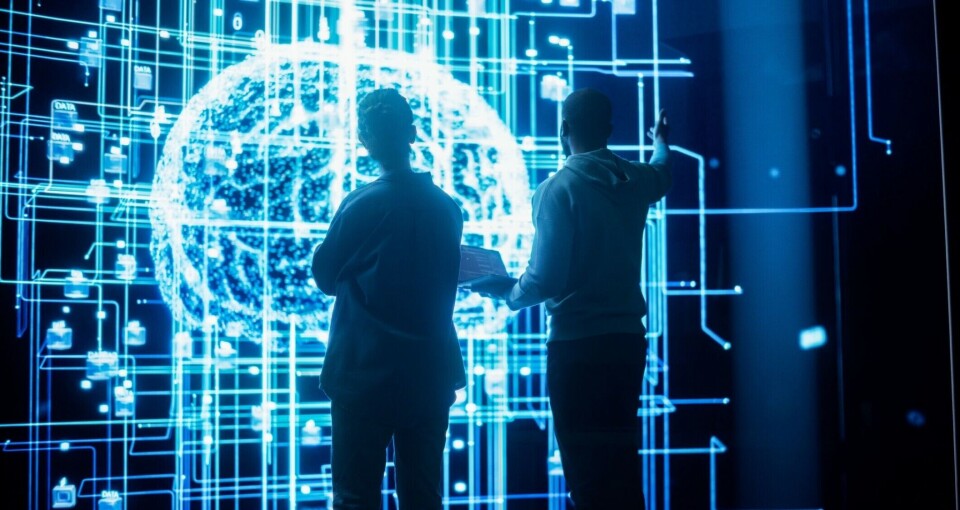THIS CONTENT IS BROUGHT TO YOU BY Oslo Metropolitan University - read more

Imagining tomorrow: How fiction shapes our vision of a sustainable future
Our collective future is almost always imagined through a technological lens. Still, alternative visions of life 30 years from now exist.
In the Hollywood classic Back to the Future Part II from 1989, time-travelling Marty McFly journeys to the futuristic year of 2015, landing in a technological everyday life that today’s viewers might chuckle at.
In addition to hoverboards and flying cars, we get a glimpse of cooking. A pizza the size of a palm grows instantly into a family-sized meal in a 'hydrator.'
A darker view of future meals is found in the film Blade Runner 2049. The food people dream of there is unattainable. Instead, it is digitally projected onto the noodle-like food they have to eat.
What do such films actually have to do with reality? Researchers believe they shape our future.
Sci-fi films and Norwegian business strategies
Researchers in the Imagine project have analysed representations of the future in fiction, focusing on stories about sustainable food, clothing, and transportation.
They have examined several well-known films and books in the science fiction genre.
They have also looked for future representations in Norwegian political documents, with an emphasis on the capital Oslo.
Finally, the researchers have analysed various business strategies in companies related to clothing, food, and transportation. How does Helly Hansen or H&M envision sustainable clothing for the future? How do transport companies Vy, Ruter, or Voi foresee our mobility?
“The idea is to see what kinds of representations of the future we, as Norwegian consumers, encounter. This shapes how we think about the future,” says project leader Nina Heidenstrøm at Consumption Research Norway (SIFO).
Utopias and dystopias
Fiction, unlike policy strategies, can go further in envisioning bold or unlikely scenarios, whether utopian or dystopian.
This freedom encourages innovative ideas and explorations of what could be. We need that, Heidenstrøm believes.
“Fiction dares to think more freely and further, daring to set today’s society a bit aside,”she says.
Technology and humanity together
All the future representations in the documents, books, and films have one thing in common: They deal with technology in one way or another.
“There is clearly a shared cultural idea or thought that technology will play a significant role in the future. Technology is almost always included in future representations,” Heidenstrøm says.
She explains that we envision what the relationship between humans and technology will look like in the future, particularly how we can use technology in ways that benefit us.
She mentions examples such as health technology, self-driving cars, or lab-grown food. How can we maximise technology to ensure our well-being?
In political documents, the future relationship between humans and technology is described more modestly than in fiction. It is seen as an improved version of the present. For instance, cities might become better to live in through urban farming on rooftops.
Sustainable consumption?
The business world also believes that technology can solve many issues.
“There's a notion in business strategies that we can use new technology to make production more sustainable without needing to consume less,” says Heidenstrøm.
Clothing is a good example. Instead of trying to create clothes with a long lifespan using high-quality materials, many manufacturers are attempting to use recycled materials, often plastics. They also work with technology to recycle textiles in large machines.
“Businesses are very much relying on technology to solve the problems the industry faces, namely that they produce far too much. They are thus using technology to produce more sustainably without reducing the amount, framing it as if it’s the best for the consumer,” she says.
Fear of artificial intelligence
At the same time, we see a technological pessimism in fiction. The sci-fi genre often has a dystopian tone, depicting a future where technology has taken over humanity.
“The entire debate about artificial intelligence revolves around this. Can we tame AI to our advantage, or will it destroy humanity?” asks Heidenstrøm.
“There's a fear that it may go too far, that technology will rob us of our interpersonal community,” she adds.
The idea of social change and community
The idea of technology is overwhelmingly dominant in the analysed future representations. However, there are other narratives that deal with more radical social change.
“How can we be a society in a different way in the future? It relates to the human community and can be seen as a counterpoint to future representations of technological development,” says Heidenstrøm.
How we will live is a good example. Can we create new forms of social communities as a counterbalance to the dystopian, impersonal city?
“Future representations of radical social change also address how we can organise the city differently than today. For example, with small urban centres or hubs, where you can find everything you need, functioning as small communities where people share resources to a greater extent than today,” she says.
Reference:
Jakubiec et al. Imagining Future(s): Mining Literacies of Sustainable Consumption, Consumption Research Norway (SIFO) project note 4-2024.
———
Read the Norwegian version of this article on forskning.no

This content is paid for and presented by OsloMet
This content is created by Oslo Metropolitan University's communication staff, who use this platform to communicate science and share results from research with the public. Oslo Metropolitan University is one of more than 80 owners of ScienceNorway.no. Read more here.
More content from OsloMet:
-
"We need to talk about how we assess teacher students"
-
Cannabis use in Norway has increased: “Not everyone needs moral lectures or worried looks"
-
Many children with ADHD do not thrive at school
-
An out-of-control race: Why we fear artificial intelligence
-
One in four seniors feels digitally discriminated against
-
Norwegians are among the least lonely in Europe




































